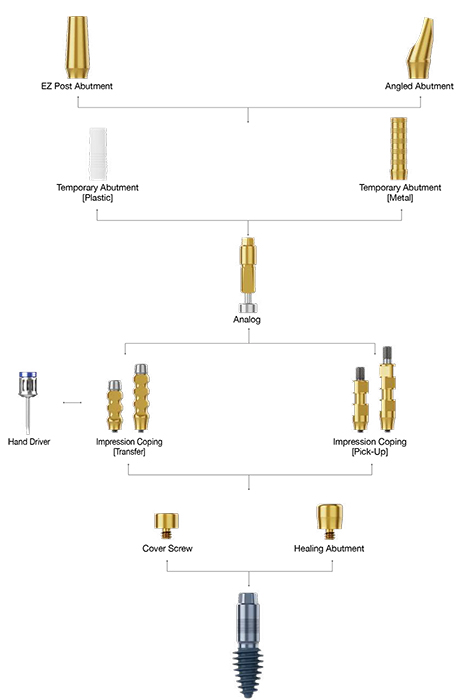The accuracy and stability of the maxillary position after orthognathic surgery using a novel computer-aided surgical simulation system
English 2022-08-23 PDF Lecture 312
Author
마케팅
Date
August 23, 2022
Ju-Won Kim, Jong-Cheol Kim, Chun-Gi Jeong, Kyeong-Jun Cheon, Seoung-Won Cho, In-Young Park and Byoung-Eun Yang
Abstract
Background: Many reports have been published on orthognathic surgery (OGS) using computer-aided surgical
simulation (CASS). The purpose of this study was to evaluate the accuracy of the maxillary repositioning and the
stability of the maxilla in patients who underwent OGS using a newly developed CASS program, a customized
osteotomy guide, and a customized miniplate.
Methods: Thirteen patients who underwent OGS from 2015 to 2017 were included. All patients underwent a
bimaxillary operation. First, a skull-dentition hybrid 3D image was rendered by merging the cone beam
computed tomography (CBCT) images with the dentition scan file. After virtual surgery (VS) using the
FaceGide® program, patient-customized osteotomy guides and miniplates were then fabricated and used in
the actual operation. To compare the VS with the actual surgery and postoperative skeletal changes, each
reference point marked on the image was compared before the operation (T0) and three days (T1), four
months (T2), and a year (T3) after the operation, and with the VS (Tv). The differences between ΔTv (Tv-T0)
and ΔT1 (T1-T0) were statistically compared using tooth-based reference points. The superimposed images of
Tv and T1 were also investigated at eight bone-based reference points. The differences between the
reference points of the bone surface were examined to evaluate the stability of the miniplate on the maxilla
over time.
Results: None of the patients experienced complications. There were no significant differences between the
reference points based on the cusp tip between ΔTv and ΔT1 (p>0.01). Additionally, there were no
significant differences between the Tv and T1 values of the bone surface (p > 0.01). The mean difference in
the bone surface between Tv and T1 was 1.01 ± 0.3 mm. Regarding the stability of the miniplate, there were
no significant differences between the groups. The difference in the bone surface between T1 and T3 was −
0.37 ± 0.29 mm.
Conclusions: VS was performed using the FaceGide® program, and customized materials produced based on
the VS were applied in actual OGS. The maxilla was repositioned
Keywords: Orthognathic surgery, Virtual surgery, Computer-aided surgical simulation, Patient-customized
osteotomy guide (PCG), Patient-customized Miniplate (PCM)















